While they’ve been taking orders for the Ioniq 5 for a while, Hyundai New Zealand (HNZ) decided to forget an in-person launch, and instead went for a Zoom launch of the Ioniq 5. Because, COVID.
Their first comment at the launch was a common one: The government incentives through the Clean Car Discount scheme was the biggest way to increase EV uptake, and sales have proven this. One hundred and fifty New Zealanders have already paid their $500 deposit on an Ioniq 5, even though there’s the potential for a 12-month wait for delivery.
HNZ says the mix of those 150 are lots of the base Entry models with their 58kWh battery pack, and then at the other end, many Limited (top spec) versions, with a 72.6kWh battery pack.
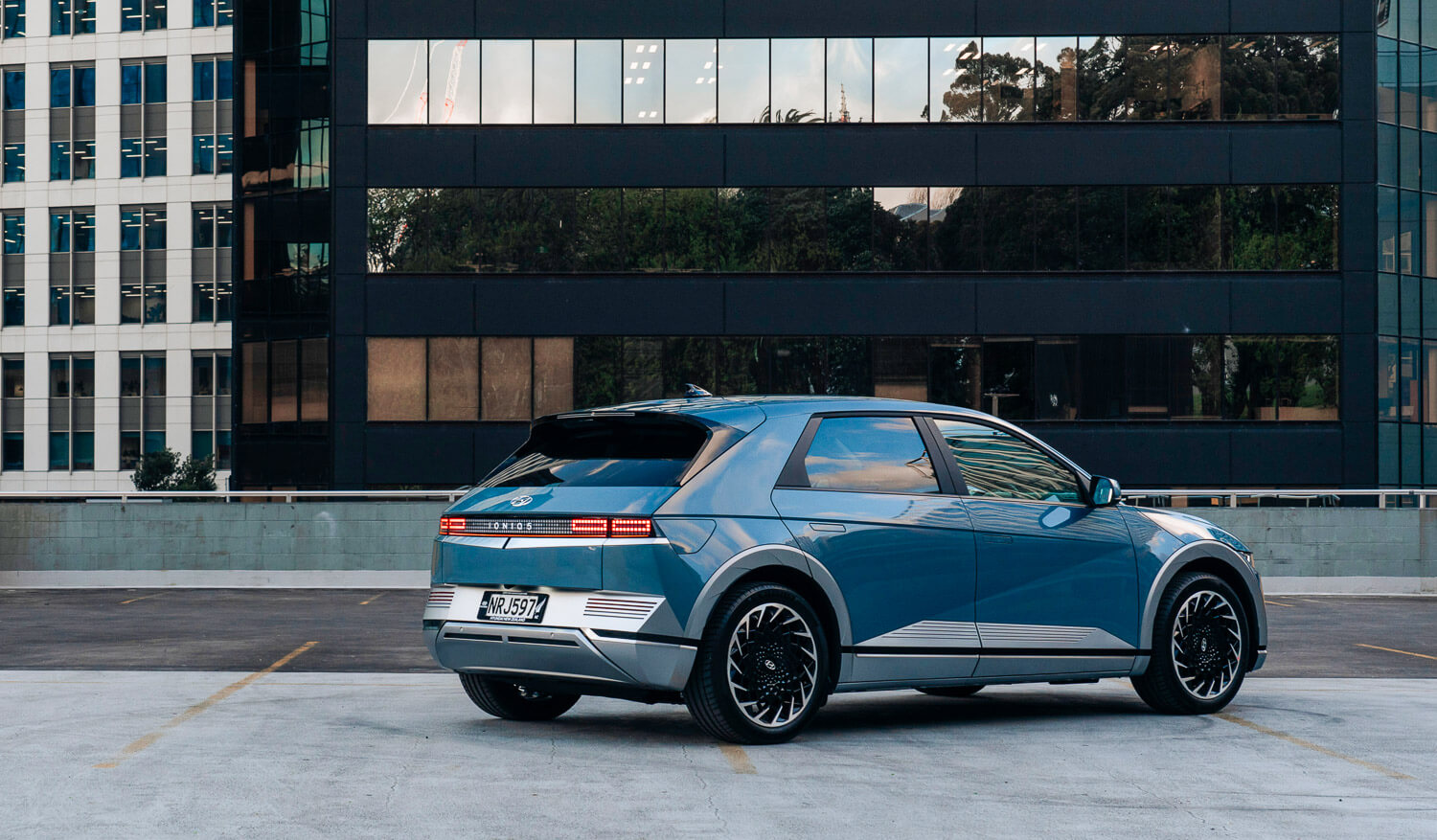
2022 Hyundai Ioniq: General info
The Ioniq 5 is an Upper-Medium SUV, quite large at 4.6m long and 1890mm wide, which makes it just 100mm shorter than the Santa Fe. Due to many design features, it has a slippery drag coefficient of just 0.29Cd.
The name itself is a combination of two words, Ion + Unique. The original Ioniq was the first car to offer a combination of 3 specific eco powertrains: full electric (BEV), plug-in hybrid (PHEV) and hybrid.
While today saw the official launch of the 5-seat Ioniq 5 SUV, there’s the Ioniq 6 coming, which is a stylish sedan with a launch date of sometime in 2022. In 2024, we’ll see the Ioniq7, a large SUV with seven seats, the size of a Palisade.
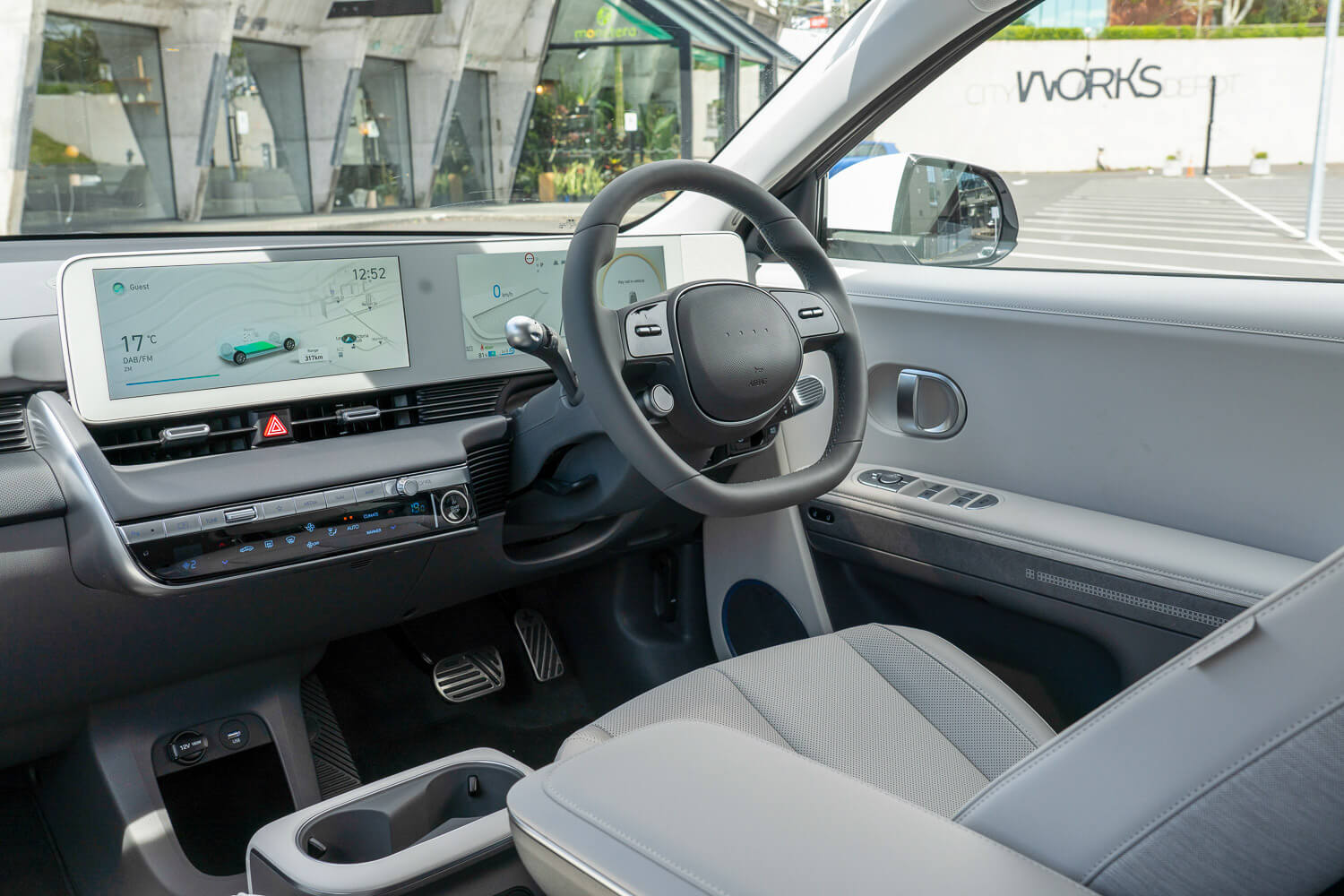
2022 Hyundai Ioniq 5: Front Design
The design of the new Ioniq took inspiration from old design files, surprisingly for some by looking at the original Hyundai Pony – Hyundai’s first exported vehicle, that debuted in 1974. The design of Concept45 (Ioniq 5) took inspiration from that car and the design concepts ideas around it.
So then, the new Ioniq takes very little from the last generation. Up front, there are Parametric Cube Pixel LED headlamps and DRLs, front garnish lighting, and an Active Air Flap in the front bumper that assists in cooling battery pack when needed.
There’s also a clamshell bonnet – so no front guards at all – for improved aerodynamics. Side-on, there are flush door handles which pop out automatically on the Elite and Limited versions, but are manually popped out on the Entry model.
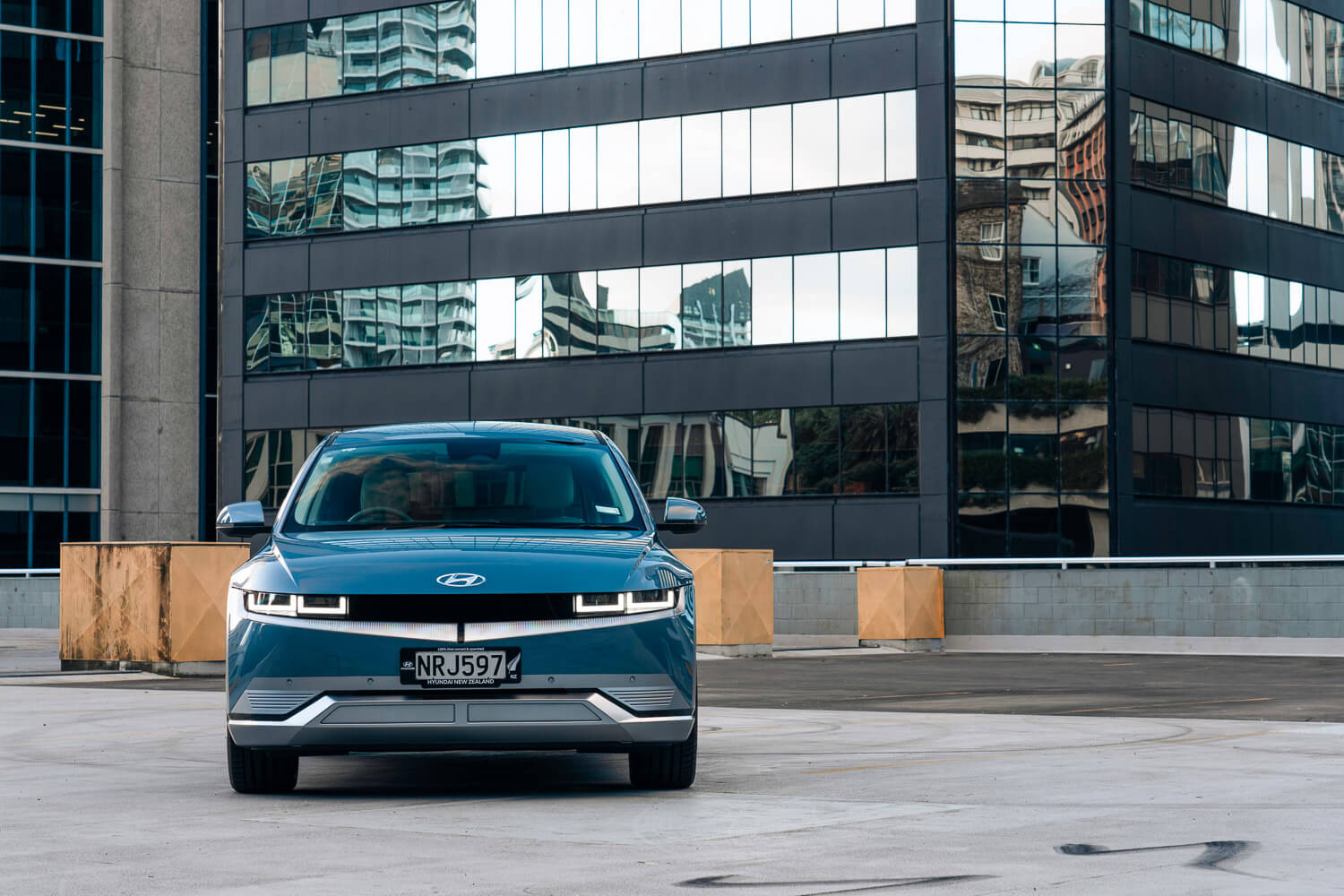
2022 Hyundai Ioniq 5: Rear Design
Hyundai have installed a hidden charge port, tucked in by the rear combination lamps, very Tesla-ish. It’s on the driver’s side of the car. Around the back there are Parametric Pixel LED Rear combination lamps, and up top there is a VISION sunroof option. It’s a fixed sunroof designed purely to let more light into the cabin, although there is also a solar roof option (for the Limited models) which can provide maximum charge rate of 205 watts, enough (under ideal conditions) to provide an extra 1,500Km of range each year, suggests Hyundai. The solar roof’s primary aim is to keep the 12-volt battery system charged up.
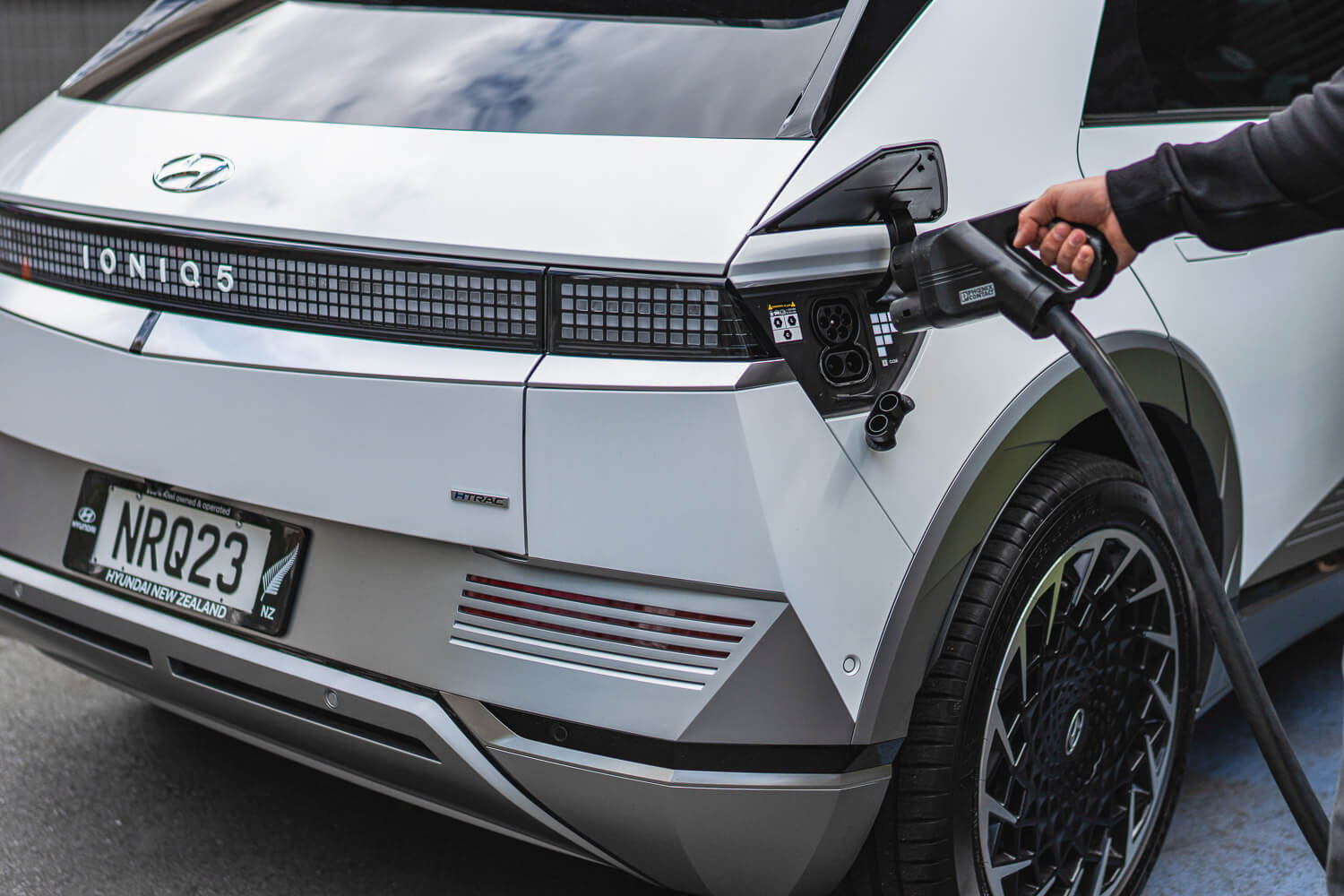
2022 Hyundai Ioniq 5: Interior
It’s very much a minimalistic design inside the car, with clean digital controls, and only the bare essential buttons available. There are two 12.3” screens, with the centre screen doing most things like seating positions, and AC controls. Don’t panic though, there are still touch buttons to control on centre dash to operate the AC.
The dashboard has a white background, and looks extremely high definition. Around the side of the steering wheel is an electronic shift dial on a stalk, so there’s no shift dial or transmission lever.
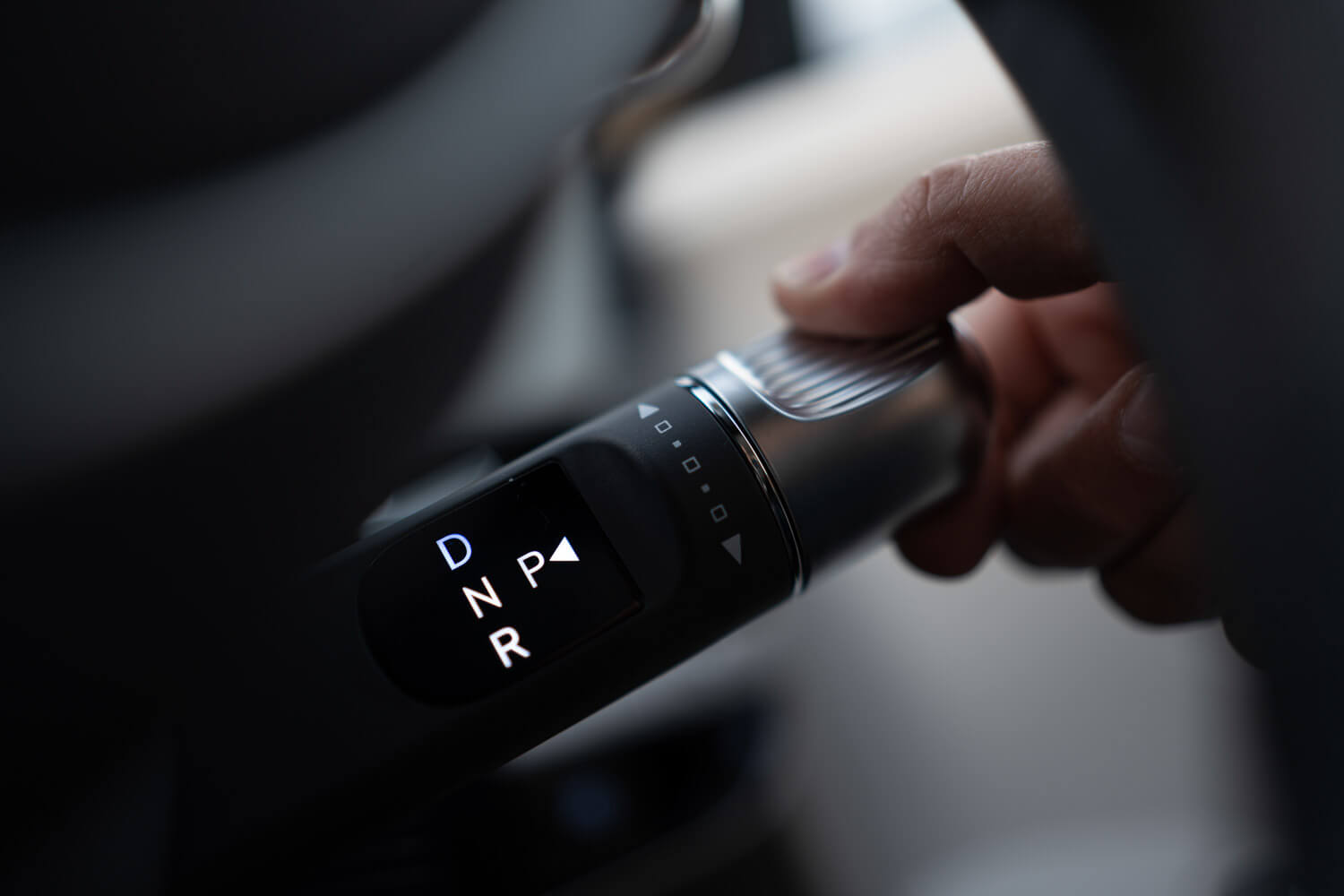
The front seats have electric fold-out leg supports, for relaxing when charging (“Relaxation Mode”), and HNZ says this is based on astronauts going into orbit. Perhaps not quite the same as going into orbit, but the thought is here. Naturally, you can’t have anyone in the back seat using this function. The back seat has electric adjustment as well, and this is included in the memory settings for driver profiles.
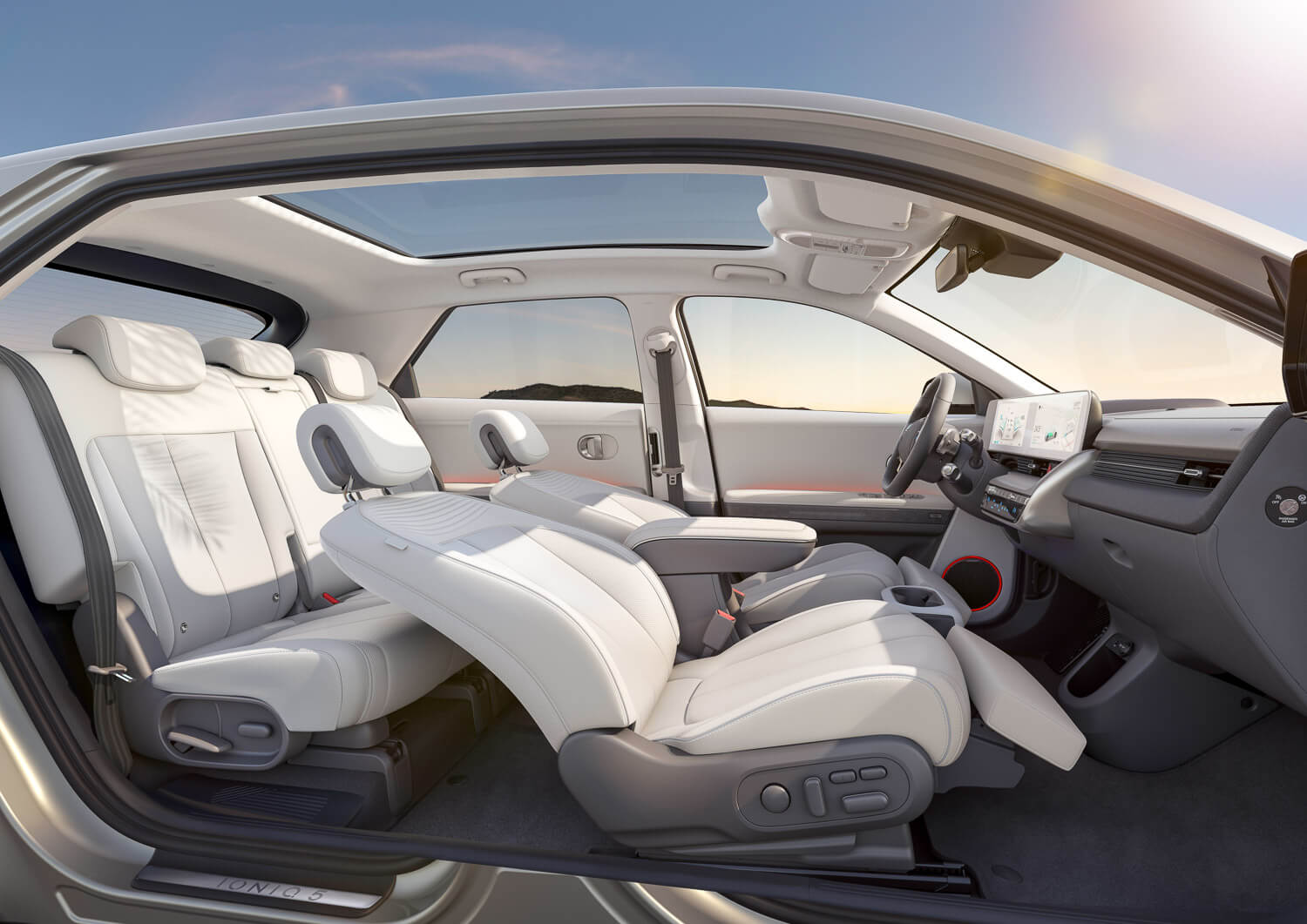
Back in front, there’s a ‘Universal Island’, which is a centre console can move 140mm to give more foot room to the rear passengers.
Cargo space is generous, with 527 litres in the rear with the seats up, and 1,587 with them down. There’s also a frunk of course, with 57 litres of space in the rear-wheel drive models (RWD), or 24 litres in the all-wheel drive (AWD) Ionioq5.
2022 Hyundai Ioniq 5: Technical Details
The car is built on the E-GMP (Electric Global Modular Platform), one designed specifically for an EV. In includes a 400 Volt/800 Volt multi-charging system, while most cars are single voltage. The Ioniq 5 defaults to 800 Volts, and in all-wheel-drive models, defaults to rear wheels as the primary drive.
This model uses a combined Traction motor, EV transmission and Inverter, developed in house for this car.
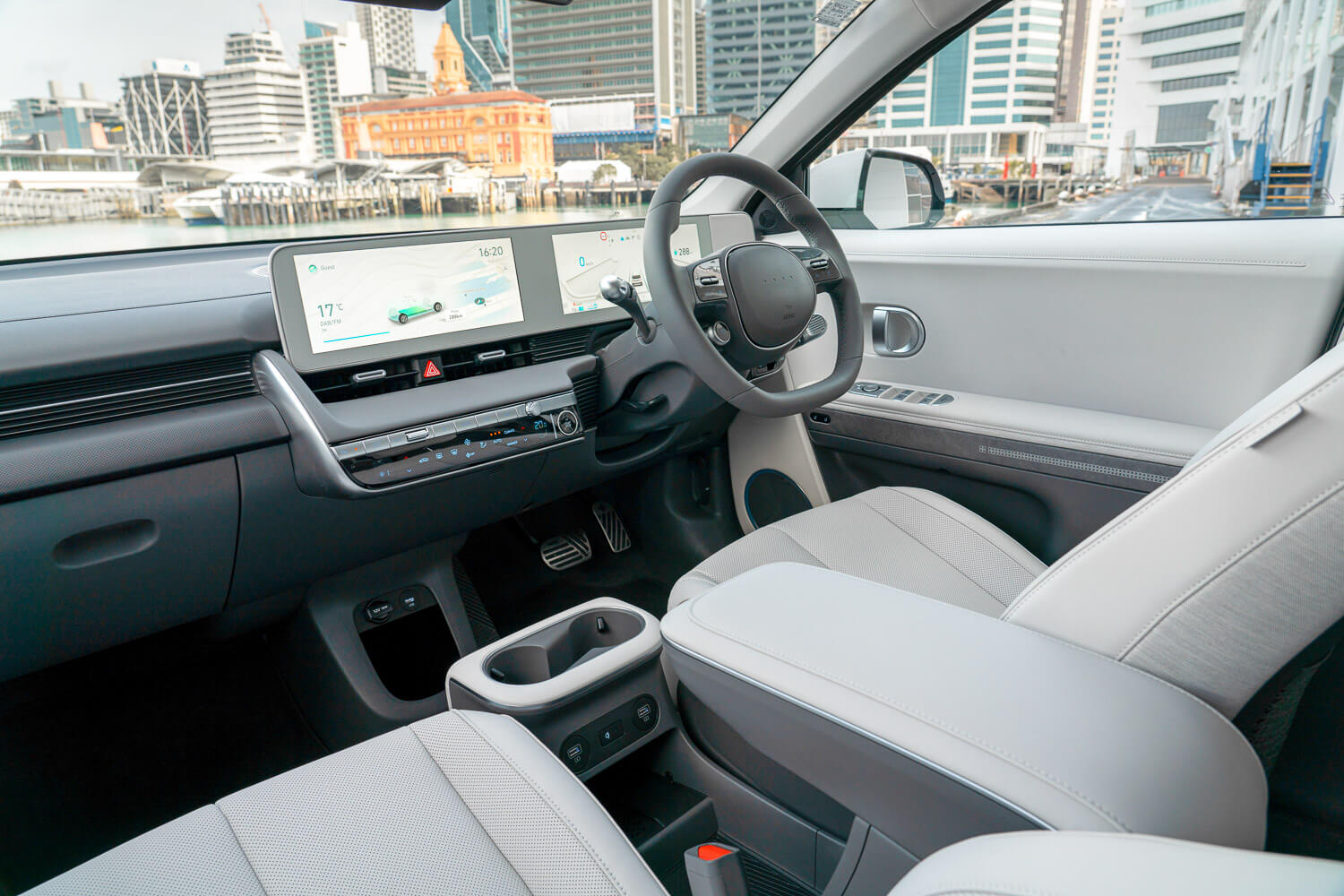
2022 Hyundai Ioniq 5: Batteries
There’s two options here, 58kWh, or 72.6kWh, with the smaller pack weighing in at 369Kg and the larger one 450Kg. Compared to the previous Ioniq, the battery is now manufactured by SK Innovation.
When using 50kWh fast charging, the car uses the 400 Volt system using the traction motor/inverter, while charging on a 300kW Hyper Charger will see a direct-to-battery charge, using the 800-volt system. The max charge this car can take is 225kW, or around a 3kWh/minute charge rate.
2022 Hyundai Ioniq 5: Charging times (approximate and theoretical)
For the 58kWh model, it would take 30 hours to charge the car from flat on a standard 3-pin socket from flat. That equates to one hour of charge for 14km of range.
Using a 7.4kW Wall charger, this reduces to 9 hours, or 1 hour of charge for 42km range. A 50kW DC rapid charger will take 33 minutes to charge from 10 to 80%, or 10 mins charge for 93km of range, while a 300kW Hyper Charger takes 15 minutes 10 to 80%; or ten mins of charge 200km range.
For the 72.6kWh model with 20” rims, the numbers are a little longer, with 38 hours on a standard socket, 11 hours on a wall charger, 41 minutes on a fast charge, and 20 minutes on a Hyper Charger.
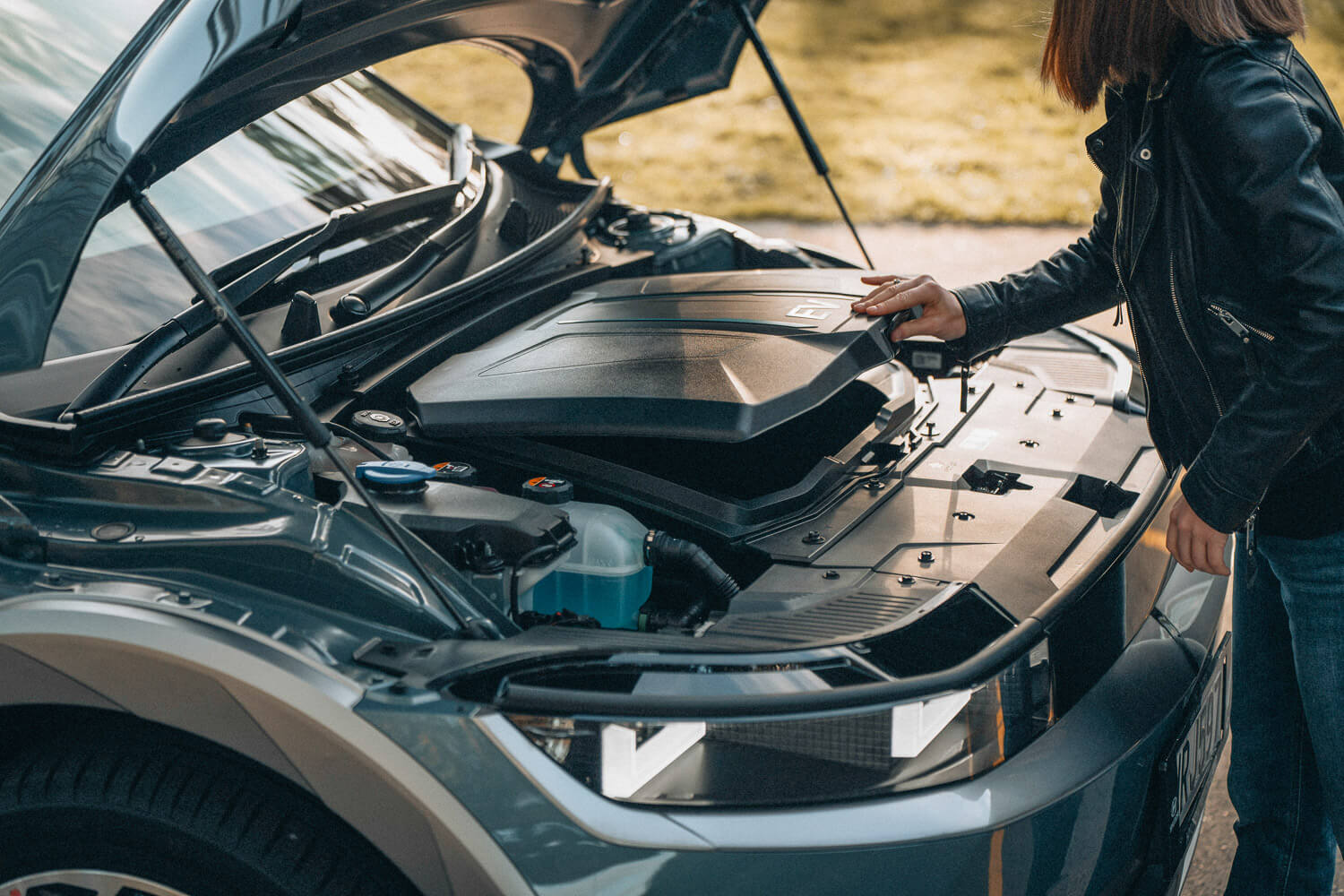
2022 Hyundai Ioniq 5: Towing
While the 58kWh model can tow 750 braked or unbraked, the 72.6kWh model can tow 750 unbraked, or a reasonable 1,600Kg on a braked trailer.
2022 Hyundai Ioniq 5: V2L (Vehicle-2-Load) Adaptor
While it’s not available for purchase just yet – HNZ is still getting the device through Worksafe NZ – a V2L adaptor will become available. This will allow the user to run some low-power appliances from the car if you were camping, or perhaps charge your e-bike.
You don’t plug the Ioniq 5 car into your house, but instead plug appliances straight into the V2L adaptor. The maximum draw for this is 15amps, or 3.6kW. The device will cost under $1,00, with some already being ordered. It can’t be used unless the car’s platform supports a bi-directional charge port – so you can’t plug it into any EV.
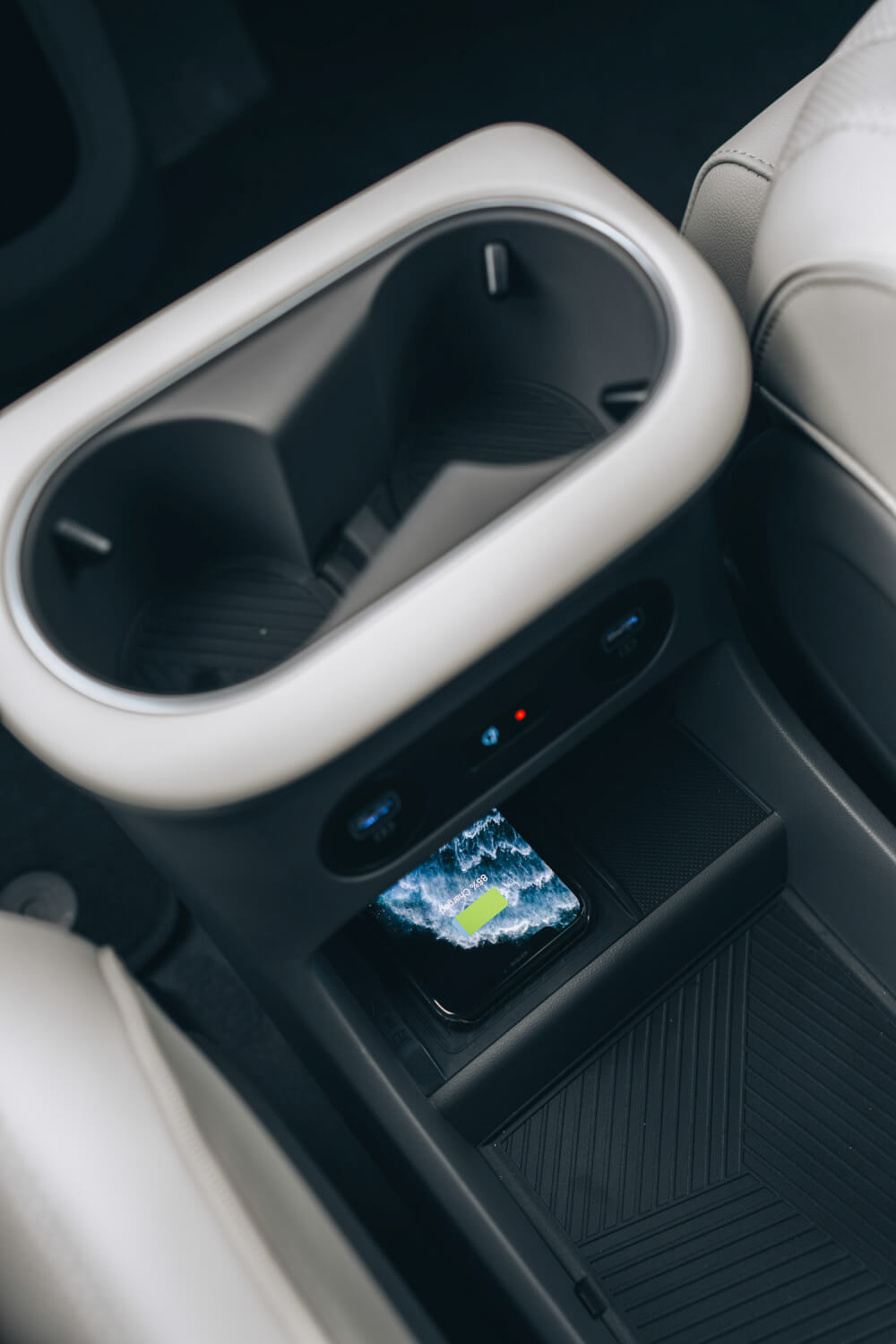
2022 Hyundai Ioniq 5: Models
There are 3 Entry models; the 58kWh RWD ($79,990), 72.6kWh RWD (with a 160kw electric motor) at $89,990, and lastly the 72.6kWh model with AWD and a 205kW electric motor ($94,990).
Next up is the Elite, fitted with a 72.6kWh battery and RWD at $96,990.
Lastly is the Limited, at 72.6kWh and RWD ($109,990) or AWD $112,990.
2022 Hyundai Ioniq 5: Performance
58kWh: 100km/h in 8.5 seconds, a range 384Km, EV motor: 125kW/350Nm
72.6kWh AWD: 100km/h in 5.2 seconds, 2WD is 7.4 seconds. A range on 19” rims 481Km (or 451Km on 20” rims), EV motor: 225kW/605Nm
DriveLife will have the new Ioniq on test shortly, and you can read about the Ioniq 5 on Hyundai New Zealand’s website.
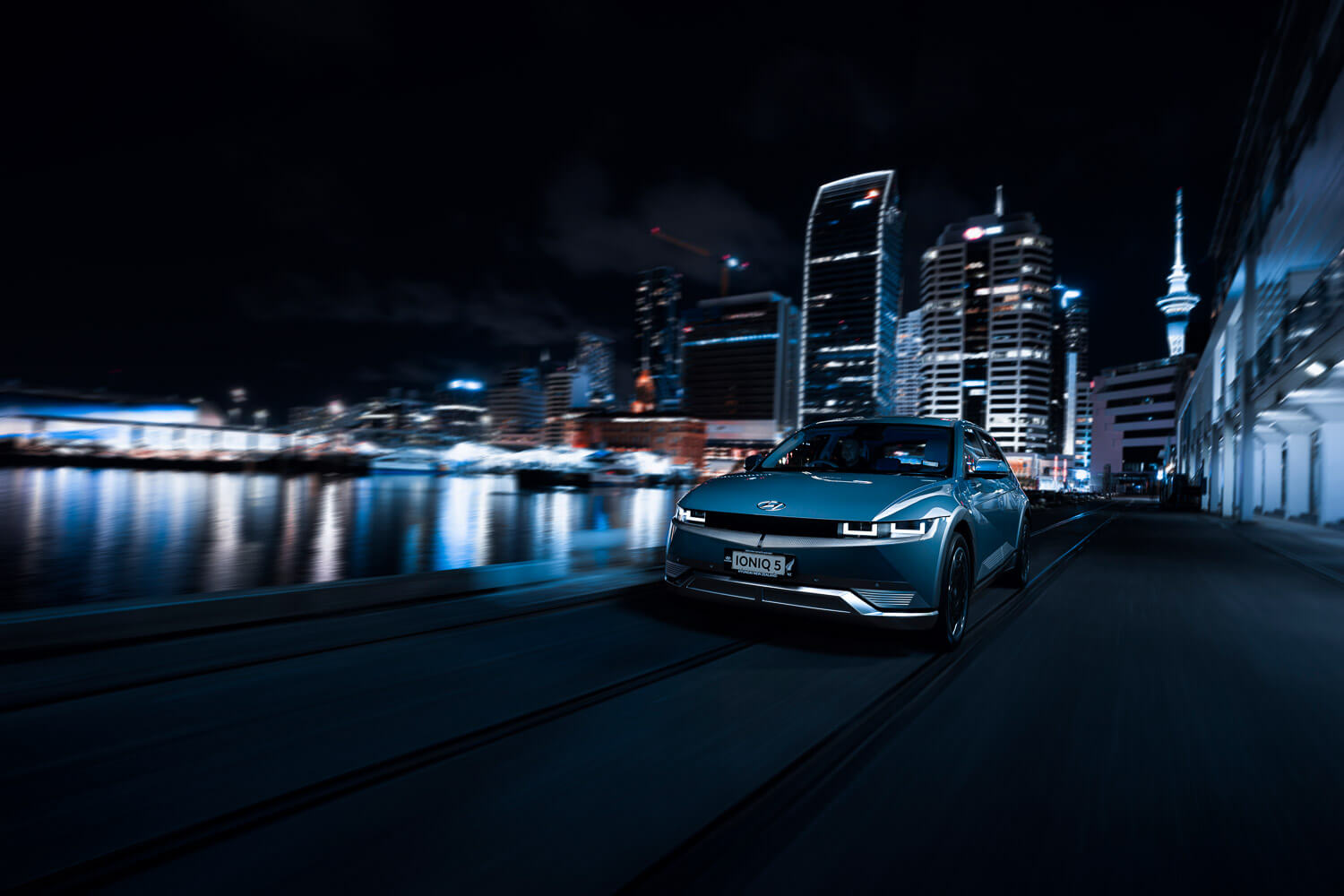


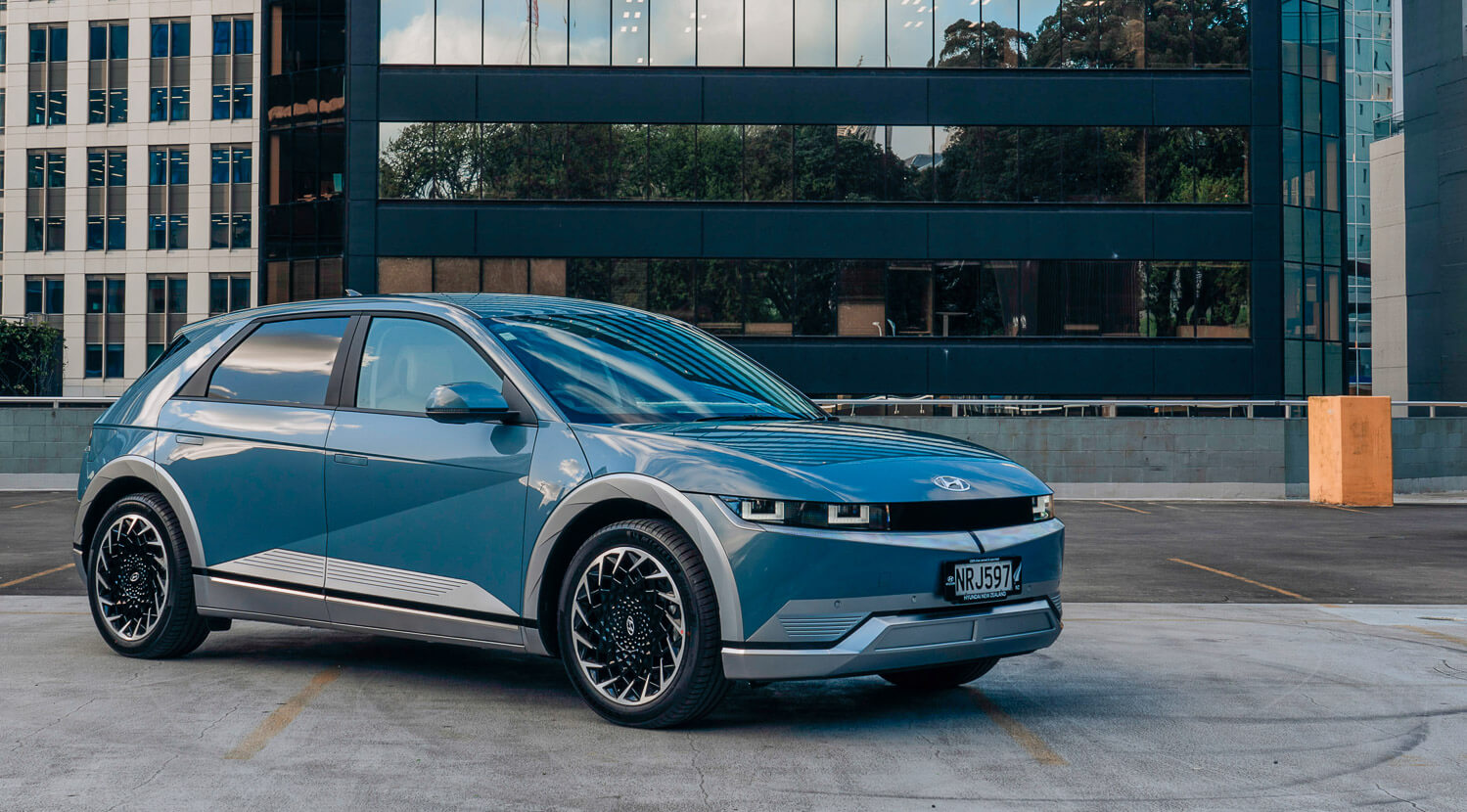











































IONIQ 5 AWD LTD 72.6 kWh 0-100kph time is around 5.0 secs. Not 7.4 as your article quotes. Some drivers have got below 5 secs.
Hi Gordon.
Thanks for the note. For this article, I went off Hyundai’s figures, hence the 7.2. I’ve gone back to them re your question, and they’ve given me the corrected numbers, so will update.
Thanks again!
Cheers
Fred